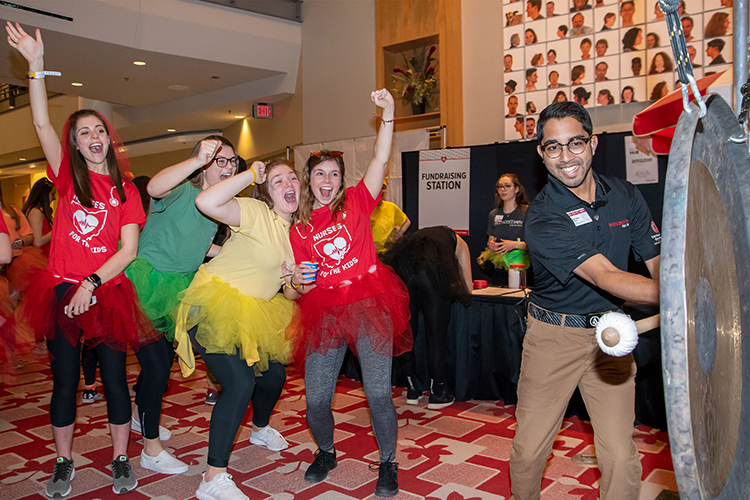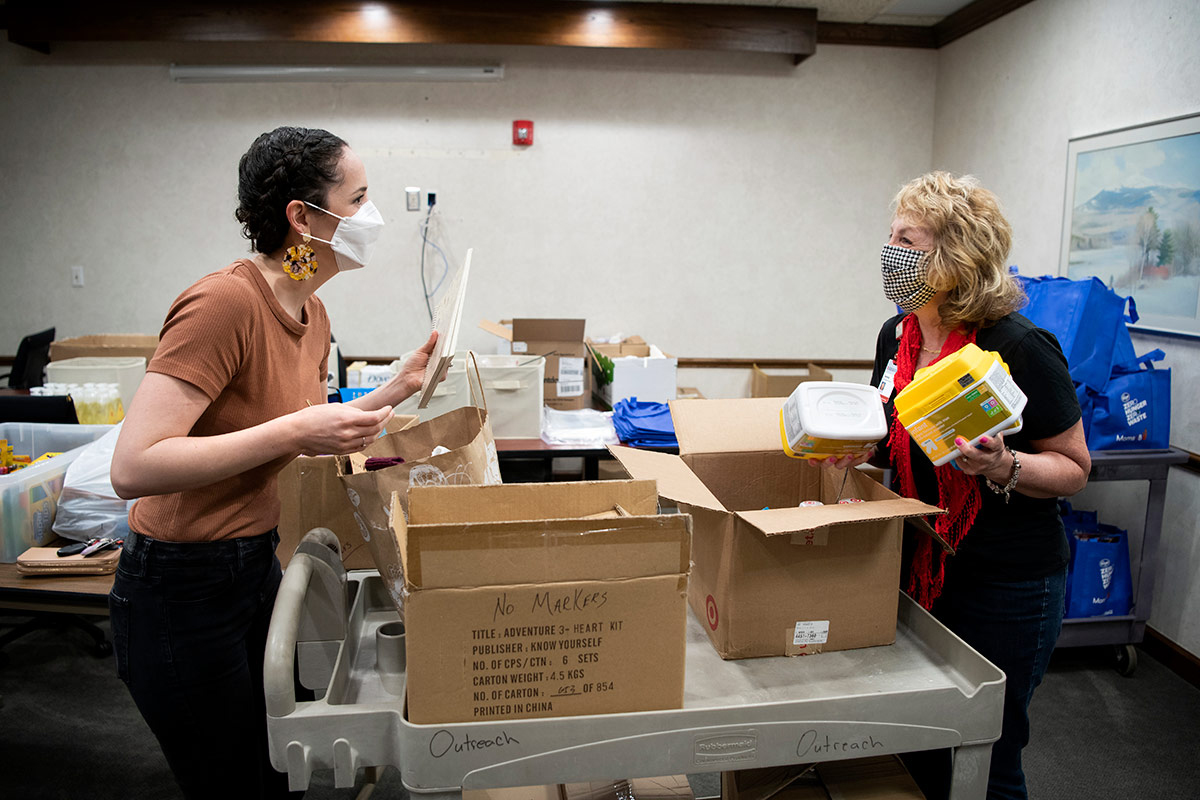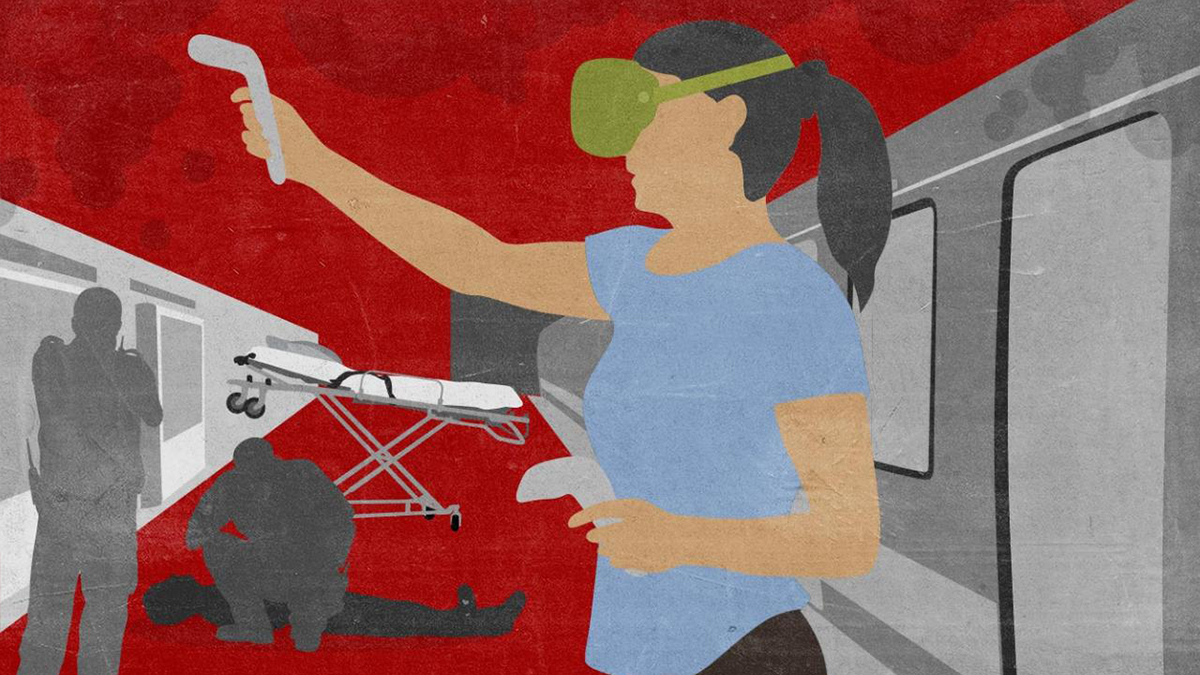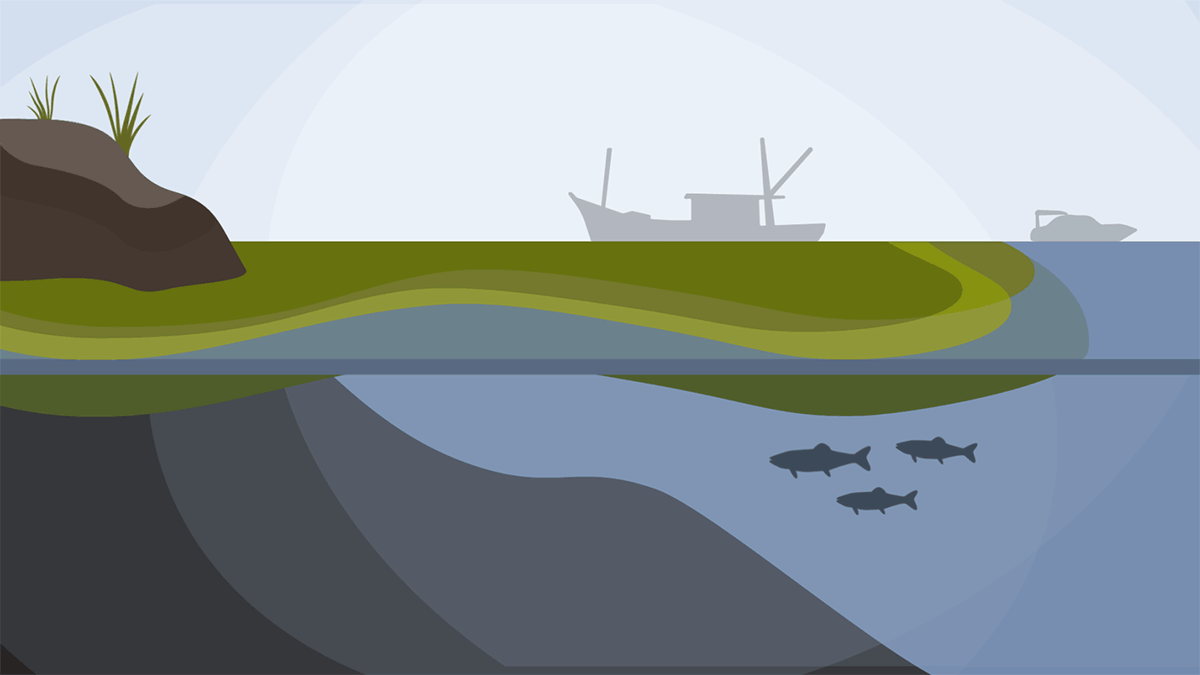For Ohioans stories
Putting our shared knowledge to work in communities around the state
Filters
 Imran's passion for giving pays off for the kids
Imran's passion for giving pays off for the kids Spending four years with a student-run philanthropy effort that raises money and awareness in support of children fighting cancers provided Imran Nuri with professional development skills and mentors.
 Moms, families receiving resources from Moms2B
Moms, families receiving resources from Moms2B Since the coronavirus (COVID-19) outbreak hit Ohio, Moms2B has worked with LifeCare Alliance to deliver food to moms in the program, as well as the same spirit of support that has been a hallmark of the program since its inception.
 Project keeps communities together through unrest
Project keeps communities together through unrest Brining programs, training and solutions to communities to help people deal constructively with political unrest and conflict — and address the underlying issues — is what drove the Divided Community Project to be created at The Ohio State University.
 VR training helping disaster response
VR training helping disaster response Doug Danforth and Nick Khan have developed a VR training tool to help teach Ohio State’s medical students, emergency medicine residents, and first responders SALT triage. Danforth, who has a background in designing VR simulations for medical students, and Kman, a FEMA first responder and professor of emergency medicine, collaborated with other medical center faculty and designers from the Advanced Computing Center for the Arts and Design (ACCAD).
 Six things to know about Lake Erie’s algal blooms
Six things to know about Lake Erie’s algal blooms The harmful algal blooms that manifest on Lake Erie in the summer can be as murky a concept to understand as they look. But it’s important to recognize the distinct and sometimes dangerous impact these blooms can have beyond the Great Lakes’ banks: Harmful algal blooms are capable of producing toxins that can cause skin rashes, GI problems and varying degrees of damage to a person’s liver, kidneys and nervous system.
The root of a solution to water pollution?
Almost half of Ohio’s lakes, wetlands and streams are tainted with nutrient runoff — fertilizers and animal manure, intended for land, but carried into bodies of water by rain and gravity. Once in the water, those chemicals threaten plant and animal life, water supplies for humans and local economies that depend on water recreation. Could floating islands peppered with nutrient-chomping plants be part of a solution?